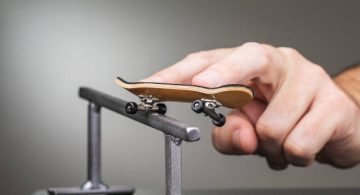日常・その他
The best from Japan
Cherubin Mugisha

Japan has gained a reputation for the quality of its products, especially in electronics. It is a home for most of the historical well known multinational companies for which observers have been using to name Japan, “Germany of Asia”. Knowing Japan and the people, this may frustrate more than one since they believe that their country is better than Germany, then Germany should be called “Japan of Europe”, but this could be another story for another time.
In the land of the rising sun, perfection is in the blood, a tradition of well-doing and know-how that has survived over time like the reign of their empire.
As an electronics enthusiast, I have never stopped admiring the pride on the faces of the Japanese people when they are talking about the quality of their products. However, that would be the least surprising for a foreigner like me, who comes from the third world where the average purchasing power allows you to buy a “Penesamig” bulb which will last only a few weeks because you can not afford a Panasonic.
From Grand-Seiko watches to old Nikon cameras that are passed from generation to generation and whose heritage is so coveted by its heirs; I must admit that there is a lot to say but, in this blog, I am going to talk a little about two of these areas which make the pride of the Japanese and make you discover their place in the world.
1. Automobile

Japan saw the birth of the first vehicle made in Japan at the beginning of the 20th century, an argument of contradiction between the first vehicle Yamaba omnibus by 山羽寅楠(Torakusu Yamaha)powered by a steam engine and Yoshida omnibus by Komanasuke Uchiyama with its diesel engine. Since then, Japanese engineers understood that they can transform the engines previously intended to run in the textile industry to convert them into vehicles.
As it seems to be a tradition in the automotive world, several car manufactures got their names from their founders even though some have changed into something easy to pronounce. In 1976, Japanese production historically surpassed that of the US, which had been at the top of the rankings since the invention of the car, thus becoming the first to dare to compete with the American giants (the first place has been occupied by China since 2007).
Japan is the world’s 3rd largest automobile manufacturer and exporter and has alone 3 of the world’s 10 largest automobile manufacturers. Japanese cars had about 23% share of world car production as of the year 2019.
Japan is home to many of the world’s well-known car brands such as Toyota, Honda, Nissan, Suzuki, Mitsubishi, Mazda, Lexus, Infiniti, Acura, Datsun, Hino, Daihatsu, Isuzu, and Subaru.
Reliability and robustness are the common denominators of Japanese cars in addition to technologies that lead to the consumption efficiency of their engines. With over 100 year-experience of Japanese automobiles, Japanese companies have been always pioneering new emergent technologies.
In the ranking of the automotive journal, vehicles with a longevity that can exceed 200,000 miles, the Japanese brands won 8 places out of the first 10 on the list (Respect to Land Cruiser).
For your information, here is the list of the top 3 automakers in the world in 2020 with Toyota taking over the VW group for the first time in 5 years.
| Rank | Manufacturer/Group | Production | HQ/Country |
|---|---|---|---|
| 1 | Toyota | 9.53 million | Japan |
| 2 | VW Group | 9.31million | Germany |
| 3 | Renault–Nissan–Mitsubishi Alliance | 7.8 million | Japan |
The combined auto sales of Japan’s eight major automakers sold up to 23.49 million vehicles, with all manufacturers posting declines amid the pandemic.
I would not end this section without mentioning that the automotive world owes several inventions to Japanese engineers such as:
2. Camera

How could we talk about the notoriety of Japanese technology without mentioning the camera?
The first camera to reach Japan’s shores arrived from a Dutch ship in 1848, and the first Japanese photograph would not have been taken until 1849 by Ichiki Shiro. But Japan has since come a long way in the photographic field. Its companies command over 87% of the world’s market share for digital cameras.
Even though traditional houses in Japan are becoming increasingly rare, we can say that in ancient time, Japanese people already hated bare walls, hence the reason you will often find a decorated part called and paper fitted to windows (Shoji) found on those sliding doors or wall panels (Fusuma) without forgetting the traditional hanging scrolls.
Since we are not one of those great samurai from Japan, or Mona Lisa to be painted by Da Vinci, we needed something that will allow us to leave a trace of our “beautiful faces” on earth, the reason why I would say that the camera is one of human’s best invention.
Japanese people like to take pictures, everywhere, whether it is in their country or not, and to see them, it looks like they have all the latest, the best and most expensive models. You would even say that it is in their culture, but It is a true passion for the most part, and not only evidence of their well-spent time. Do not be surprised to see people waiting for a train for hours to take some snaps of it.
Moreover, this passion of amateurs is accompanied by that of engineers who do everything to push even further the limits of the possible to satisfy any amateur of the photo, by a range of products to lose minds.
Japan is by far the world’s 1st largest camera manufacturer and exporter and has 8 of the world’s 10 best camera brands in the world. Here is the 2020 rank based on the market share in all categories:
| Rank | Company | Country |
|---|---|---|
| 1 | Canon | Japan |
| 2 | Sony | Japan |
| 3 | Nikon | Japan |
| 4 | FUJIFILM | Japan |
| 5 | Leica | Germany |
| 6 | Panasonic | Japan |
| 7 | Olympus | Japan |
| 8 | Pentax | Japan |
| 9 | Hasselblad | Sweden |
| 10 | Lumix | Japan |
Here is a non-exhaustive list of some of the inventions from Japanese engineers in the camera world:
- Portapak by Sony in 1967
- Digital single-lens reflex camera by Nikon ft Panasonic in 1986
- Early true digital cameras By Fujifilm in 1988
- Consumer camera with a liquid crystal display by Casio in 1995
- Camera phones by Kyocera in 1999
- The first True Mirrorless camera by Panasonic in 2008
References
 2025/01/10
2025/01/10 2024/03/01
2024/03/01 2023/12/01
2023/12/01 2023/06/23
2023/06/23 2023/02/24
2023/02/24 2022/12/16
2022/12/16 2022/06/24
2022/06/24 2022/06/17
2022/06/17